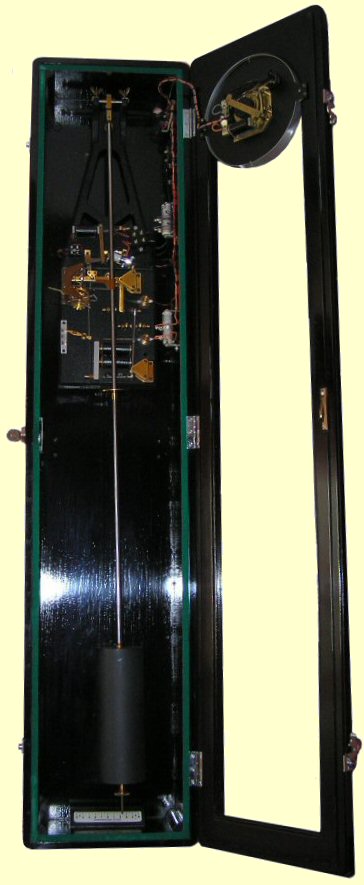
The clever design of these models ensures that the disturbance to the pendulum is kept to an absolute minimum when making the mercury switch tilt and thus operate. The major part of the tilting action being done by an electro-magnet in two separate and distinct stages.
The 'Power Station' models, in addition to the electro magnet and mercury switch itself, have two other important little additions to enable this.
Firstly these models have an extra vane in addition to the normal trip vane for the gravity arm. This second vane is fitted on the same arbor but towards the rear.
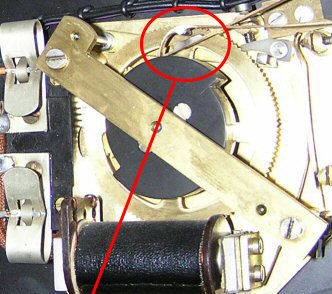
The Pilot Dial Contacts - truly dreadful things to adjust correctly!
Secondly, the pilot dial has a cam on the minute arbour that closes a set of contacts at 30 seconds before the half hour, and the hour. The contacts are then opened the next time that the slave dial steps on, this means the contacts are closed and making a circuit for a full 30 second period every half-hour.
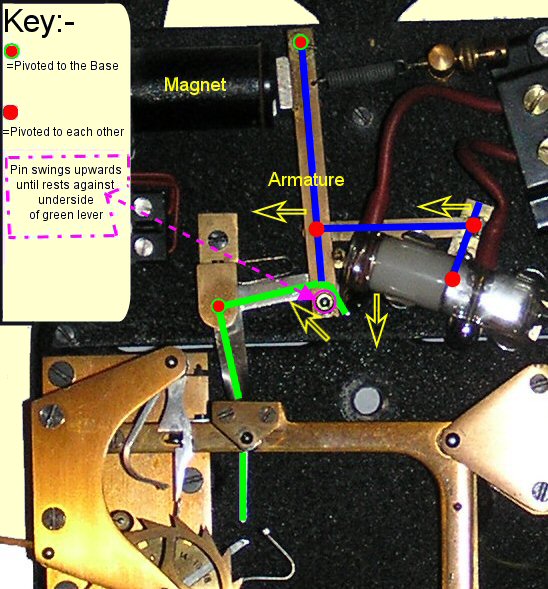
The First Stage of Operation:
The pilot dial contacts close and activate an electro magnet whose armature pulls on a horizontal connecting arm pivoted onto the mercury switch lever (the blue lines show these levers).
This action starts to tip the mercury switch.
On the bottom of the armature is a pin (a mauve arrow points to it) which now swings upwards until it hits the underside of the green lever. The armature at this point is still being pulled in by the activated magnet and is capable of more movement and further tipping of the mercury switch (which is not yet actually 'on'), but it is forced to stop because of the pin pressing against the green lever. The mercury switch is now almost tipped to the 'on' position and it will stay in this position because the pilot dial contacts will stay closed for the next 30 seconds
Second Stage:
In the meantime the count wheel is still being pulled around every two seconds. This continues until the additional extra vane at the rear comes round into a position where it can push the tip of the green lever to the right. This then allows the armature to resume rising, eventually allowing the mercury switch to tip sufficiently to allow it to complete its circuit. So after the electro magnet has done the majority of the work, the pendulum finishes it off with very little extra effort.
Because the count wheel is still being pulled around, the next thing to occur will be the normal (front) vane releasing the gravity arm. This drops as normal and the pilot dial steps on 30 seconds. This latest operation of the pilot dial opens the contacts on the cam, which in turn releases the electro-magnet. The magnet was previously holding the mercury switch in its tilted position, so once released the mercury tube now tilts back to its natural position and the switch goes 'off'.
For the majority of the time (29 mins & 30 seconds of each half-hour) the additional vane at the rear will harmlessly pass by the end of the mercury switch's release lever. This is because the electro magnet has not brought it close enough to make contact.
This is shown below where you can see the difference between the electro magnet 'priming' the mechanism by moving the lever closer, and in it not doing so.
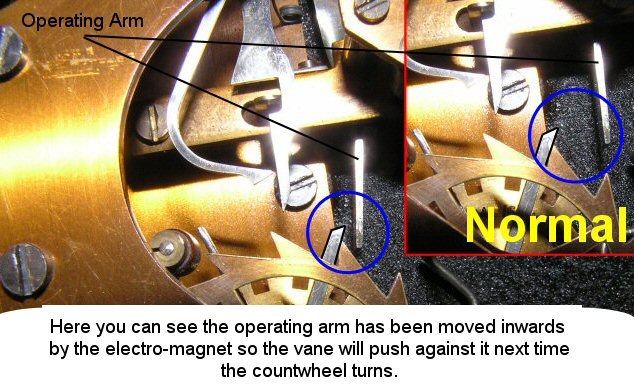
Once the mercury switch has made its contact the length of the pulse is dependant on how far apart the two trip vanes are. This is because the first rear-most vane allows the mercury switch to come on, whilst the second vane indirectly, by way of stepping the pilot dial on and releasing the magnet, turns it off.
Synchronome therefore made the position of the rear arm adjustable by allowing you to slide the arm to predetermined positions. This way you can decide (in 2 second increments from 2 to 28) how long the pulse will last.
The picture below shows this arm. The number in the little circle corresponds to the length of time that particular setting of the vane will give you.
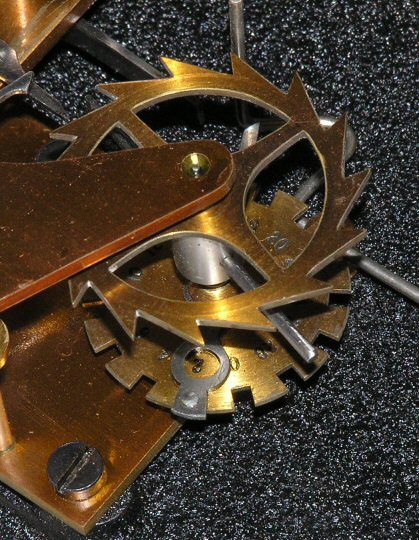
In this instance it is set to two seconds. The range runs from 2 seconds through to 28 seconds in two second steps.
Original Synchronome Literature and Instructions
Pilot Dial Contacts





